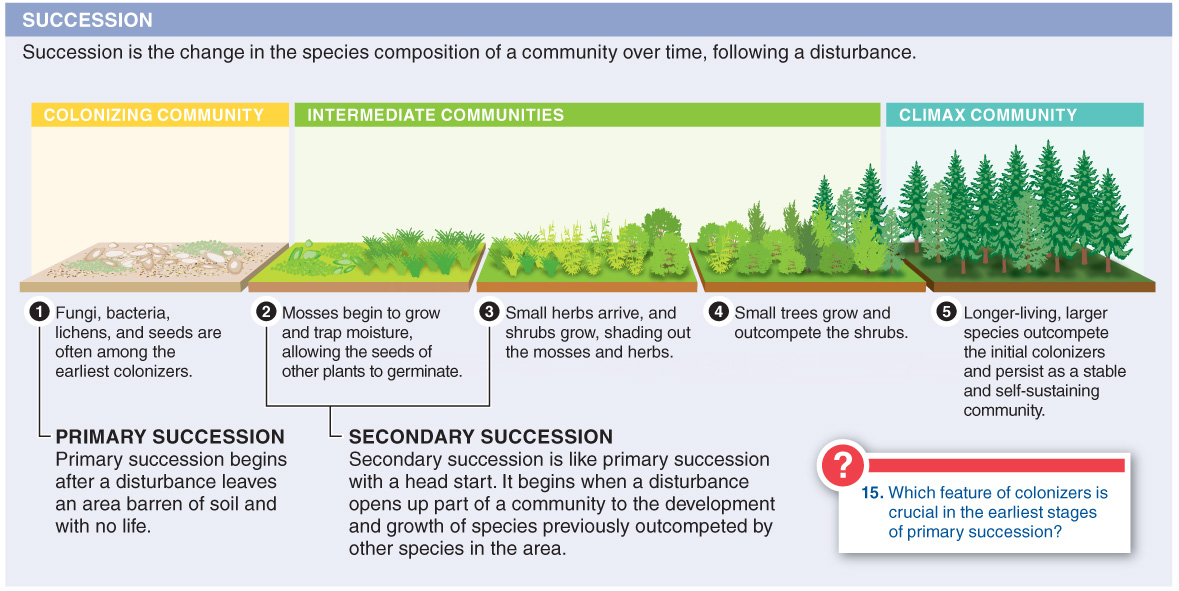15.16–15.17
15.16–Communities can change or remain stable over time.
Most communities change over time. The patterns of succession depend on the rate and magnitude of disturbances.

Q
In a commensal relationship:
- a) one species pollinates the other.
- b) neither species benefits or is harmed, but the community itself benefits.
- c) one species provides nutrients, usually cellulose, for the other.
- d) one species benefits while the other neither benefits nor is harmed.
- e) the “loser” has reduced reproductive output.

Coevolution:
- a) is responsible for all the beautiful flowers in the world.
- b) is responsible for nectar production by plants.
- c) reveals that both biotic and abiotic resources can serve as selective forces.
- d) can produce an insect with a tongue as long as its body.
- e) All of the above are correct.

The chief difference between primary and secondary succession is that:
- a) primary succession occurs among the plants in a habitat, whereas secondary succession occurs among the animals.
- b) primary succession begins with no life and no soil, whereas secondary succession begins with both.
- c) secondary succession alters the biotic environment, whereas primary succession alters the abiotic environment.
- d) primary succession occurs more quickly than secondary succession.
- e) primary succession can occur in terrestrial and aquatic habitats, but secondary succession can occur only in terrestrial habitats.

Keystone species:
- a) occur only in intertidal zones.
- b) play an unusually important role in determining the species composition in a habitat.
- c) can be removed from a habitat without any impact on the remaining species in the community.
- d) are producers and therefore usually are plants.
- e) are more expendable than commensal species, from a conservation perspective.
